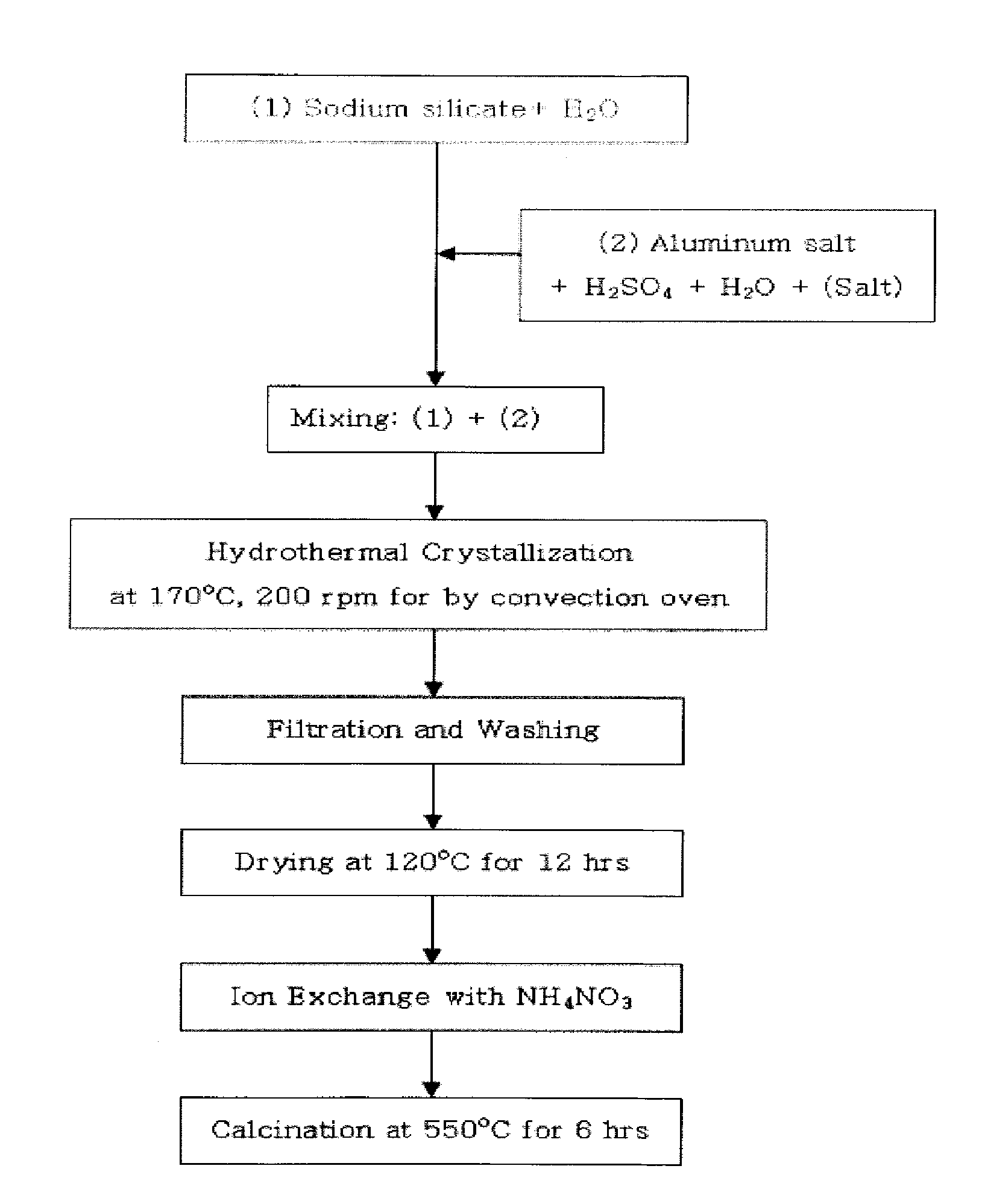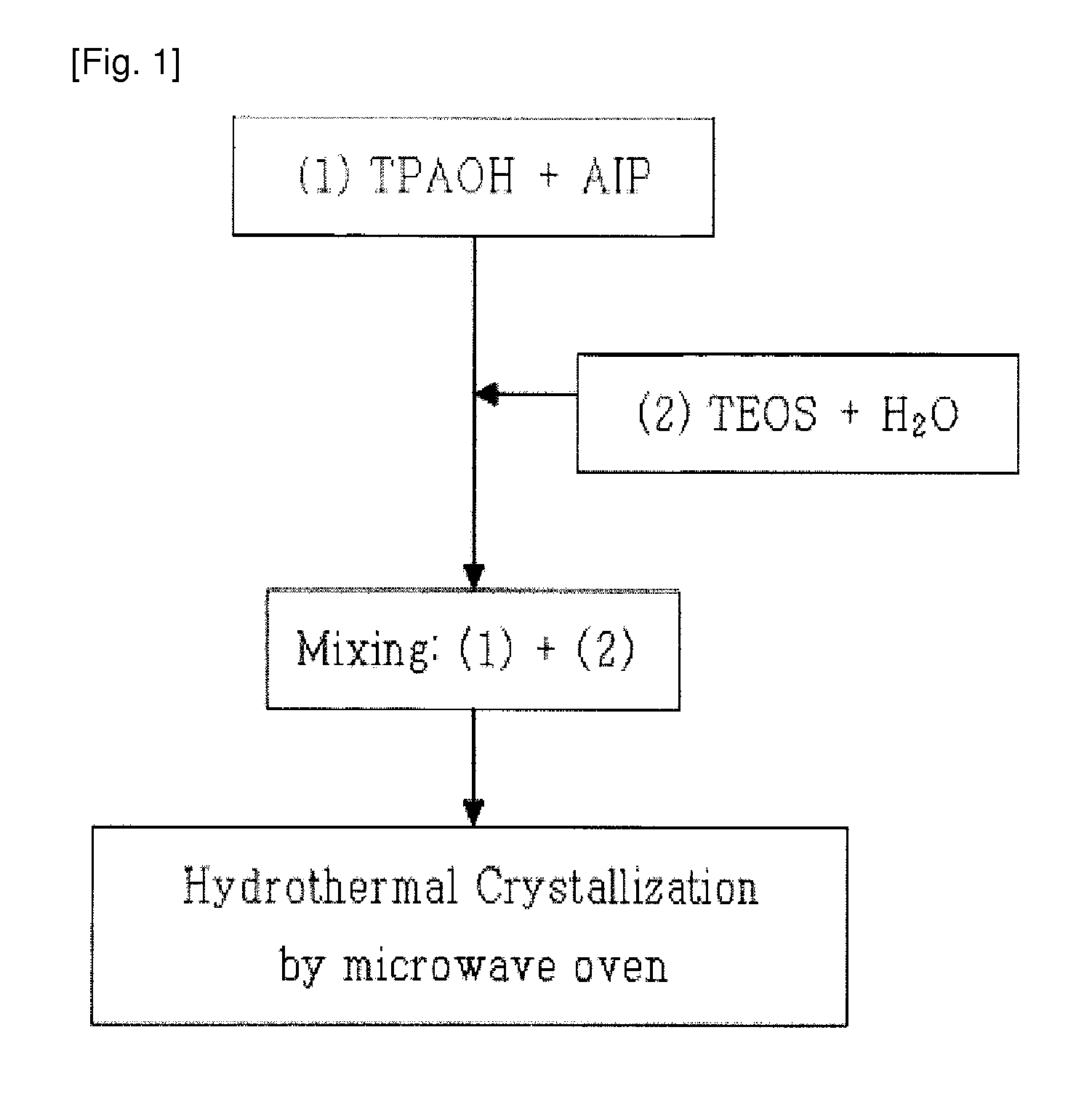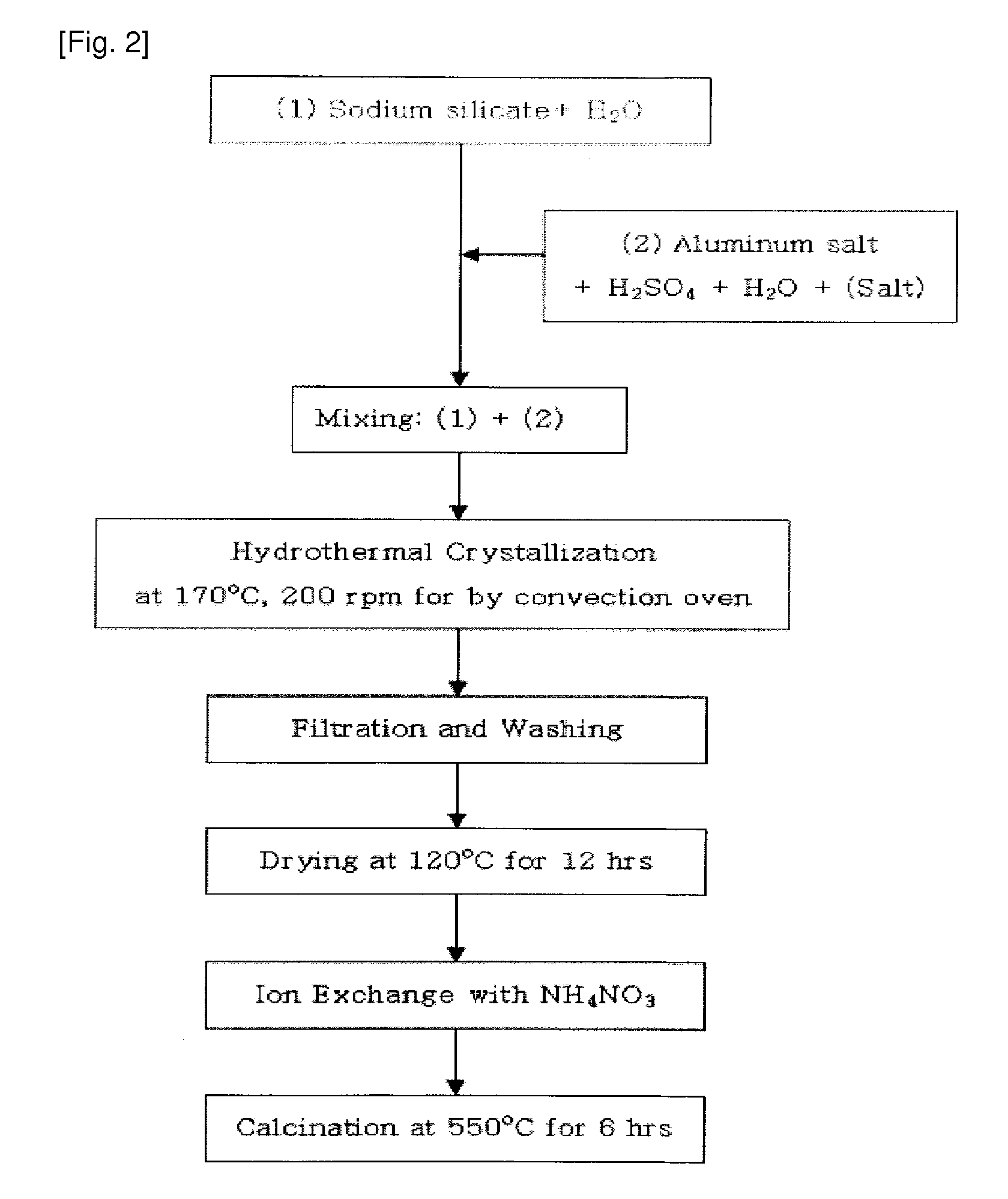Method of preparing zsm-5 zeolite using nanocrystalline zsm-5 seeds
- Summary
- Abstract
- Description
- Claims
- Application Information
AI Technical Summary
Benefits of technology
Problems solved by technology
Method used
Image
Examples
preparation examples 1 and 2
Synthesis of Nanocrystalline ZSM-5 Seed
[0059]13.6 g (Preparation Example 1) or 36.1 g (Preparation Example 2) of TPAOH serving as an organic structure-inducing material was mixed with 0.1 g (Preparation Example 1) or 0.4 g (Preparation Example 2) of aluminum isopropoxide serving as an alumina source, and then the mixture was uniformly stirred for 30 minutes. Subsequently, 13.6 g (Preparation Example 1) or 36.0 g (Preparation Example 2) of TEOS and 72.7 g (Preparation Example 1) or 27.5 g (Preparation Example 2) of distilled water were added to the stirred mixture, and then stirred for 2 hours to form a reaction mixture.
[0060]Subsequently, the reaction mixture was put into a microwave synthesis reactor (manufactured by CEM Corp.), and was then irradiated with microwaves at 80° C. for 90 minutes in the first step and then irradiated with microwaves at 130° C. for 180 minutes in the second step to synthesize a nanocrystalline ZSM-5 seed. Thereafter, the XRD analysis and SEM analysis of...
examples 1 to 4
Synthesis of ZSM-5 Using Nanocrystalline ZSM-5 Seed of Preparation Example 2
[0063]25.8 g of water glass serving as a silica source was mixed with 33.2 g of distilled water, and was then stirred for 30 minutes to provide solution 1. Further, 3.1 g of aluminum sulfate, 4.0 g (Example 1), 3.0 g (Example 2), 2.0 g (Example 3) or 1.1 g (Example 4) of sulfuric acid, and 33.2 g of distilled water were mixed and then stirred for 20 minutes, and then 0.7 g of the nanocrystalline ZSM-5 seed synthesized in Preparation Example 2 was added thereto and then stirred for 20 minutes to provide solution 2.
[0064]Subsequently, solution 1 and solution 2 were mixed with each other, stirred, put into a teflon vessel, hydrothermally synthesized at 170° C. for 24 hours and then cooled at room temperature to obtain a synthesized stock solution. Subsequently, the synthesized stock solution was dried at 120° C. for 12 hours, and then the X-ray diffraction (XRD) analysis and scanning electron microscope (SEM) a...
examples 5 and 6
Synthesis of ZSM-5 Depending on the Amount of Added Nanocrystalline ZSM-5 Seed
[0065]25.6 g of water glass serving as the silica source was mixed with 33.9 g of distilled water, and was then stirred for 30 minutes to provide solution 1. Further, 3.2 g (Example 5) or 3.1 g (Example 6) of aluminum salt, 1.9 g of sulfuric acid, and 33.9 g of distilled water were mixed and then stirred for 20 minutes, and then 1.4 g (Example 5) or 2.9 g (Example 6) of the nanocrystalline ZSM-5 seed synthesized in the Preparation Examples was added thereto and then stirred for 20 minutes to provide solution 2.
[0066]Subsequently, solution 1 and solution 2 were mixed with each other, stirred, put into a teflon vessel, hydrothermally synthesized at 170° C. for 24 hours and then cooled to room temperature to obtain a synthesized stock solution. Subsequently, the synthesized stock solution was dried at 120° C. for 12 hours, and then X-ray diffraction (XRD) analysis and scanning electron microscope (SEM) analys...
PUM
| Property | Measurement | Unit |
|---|---|---|
| Temperature | aaaaa | aaaaa |
| Time | aaaaa | aaaaa |
| Fraction | aaaaa | aaaaa |
Abstract
Description
Claims
Application Information
 Login to View More
Login to View More - R&D
- Intellectual Property
- Life Sciences
- Materials
- Tech Scout
- Unparalleled Data Quality
- Higher Quality Content
- 60% Fewer Hallucinations
Browse by: Latest US Patents, China's latest patents, Technical Efficacy Thesaurus, Application Domain, Technology Topic, Popular Technical Reports.
© 2025 PatSnap. All rights reserved.Legal|Privacy policy|Modern Slavery Act Transparency Statement|Sitemap|About US| Contact US: help@patsnap.com



